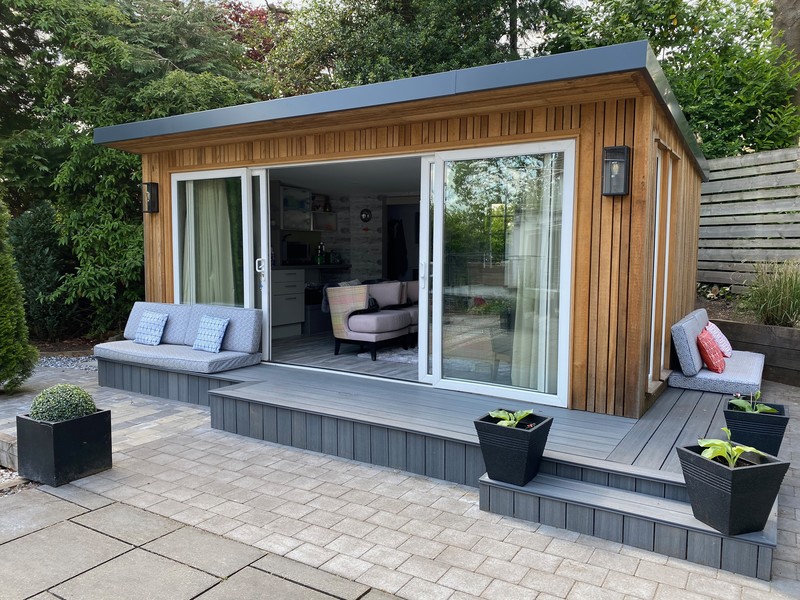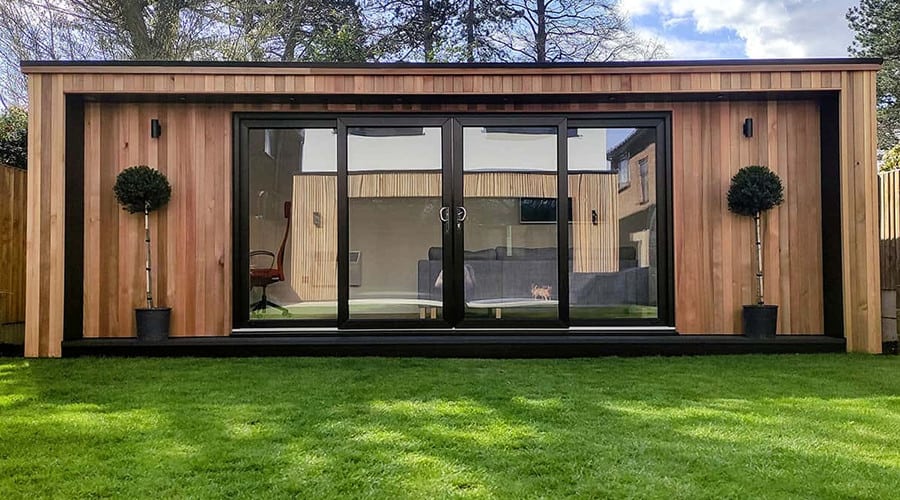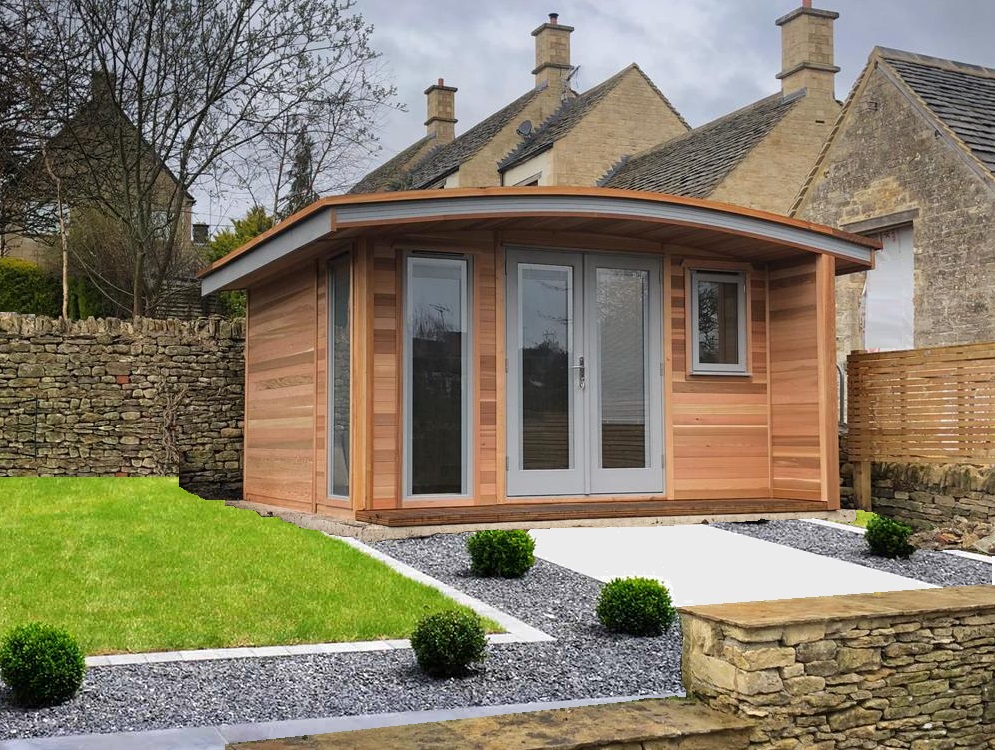New Reasons For Planning Permission On Garden Sheds
Wiki Article
What Planning Permission Are You Required To Get For Your Garden Rooms Etc In Relation To Conservation Areas?
To preserve the beauty and character of conservation areas, when creating extensions, gardens, or conservatories within these designated areas, certain restrictions apply. Planning permission is required in conservation areas. Here are some important considerations.
Any building or extension that falls under permitted development rights could require permission for planning in the conservation area. This includes garden buildings, sheds and outbuildings.
Size and Scale
Planning permission may be required for any building regardless of its size if it alters the characteristics of the conservation area. The scale and size of new constructions or extensions are more tightly controlled than those in zones that are not designated.
The location of the property:
Planning permission is usually required for extensions and buildings located to the front or sides of the property. Planning permission may be needed for rear structures if it is visible from public places or affects the character of the property overall.
Materials and Design:
In conservation zones, the selection of materials and design is vital. The materials utilized for any extension or new construction must be in accordance with the architecture or historical interest of the region. To ensure these standards are fulfilled, planning permission will be required.
Demolition:
The demolition of buildings or parts of them including outbuildings, boundary walls, usually requires approval from the conservation area's planner to ensure that any changes are in keeping with the character of the area.
Height Restrictions:
In conservation areas, there are higher height limits in conservation areas. Anything that is more than 2.5 meters in height (especially less than 2 meters from the border) is likely to need planning permission.
Impact on surroundings
If the proposed building or addition has significant effects on the visual appearance of the conservation area, or its setting, including views of the area, a planning permit will be required.
The use of the building:
An outdoor space, outbuilding, or studio may not need planning permission if the use is allowed.
Additions and Alterations
Extensions that exceed specific size or volume limits or change the external design of the building will generally require planning permission. This includes conservatories and other major changes.
Curtilage Structures:
Constructions that are located within the curtilage an listed building within a conservation area always require planning permission. This includes any extensions, new outbuildings, or alterations.
Trees that are protected
Trees within conservation areas are protected. In the event that your proposed construction will impact trees, you may need to seek additional permits, including the tree work permit in addition to planning permission.
Local Authority Guidelines
Each conservation area could have specific guidelines and restrictions set by the local authority for planning. These can include detailed guidelines about what's permissible and not, tailored for the specific nature of the area.
Planning permission is mandatory in conservation areas. This requires an in-depth analysis of the effect that the proposed extension, garden room, outhouse, conservatory or garden office would have on the historic and architectural features of the region. To ensure that the project is in compliance with all applicable laws, it is essential to consult with your local authorities early in the process of designing. Read the recommended decking on grass for website advice including do i need planning permission for a garden room with toilet, composite garden office, outhouse building, what is a garden room, luxury outhouse, composite garden office, garden rooms in St Albans, copyright garden rooms, garden room permitted development, garden room planning permission and more.

What Kind Of Permissions Are Required To Construct Garden Structures And Gardens?
When planning to build conservatories, garden rooms, outhouses, garden offices or extensions, taking into account the impact on the environment is essential and could influence the need for planning permission. These are important considerations for the environment Biodiversity
Planning permission is needed if the structure has an impact on local wildlife habitats such as hedgerows, trees, or ponds. In order to reduce and evaluate the impact the environmental impact, an eco-survey could be required.
Habitats and species that are protected
Permission is required if there are protected species at the site (e.g. bats, newts or other species) or if they are located in protected habitats or near (e.g. Sites of Special Scientific Interest SSSI). To protect them, special precautions must be taken.
Tree Preservation Orders
Permission is required for removal or alter trees covered by TPOs. The local authority may ask for a replacement plant as well as other mitigation measures.
Risk of flooding and Water Management Risk and Water Management
Planning permits are required for development close to flood-prone zones. It could be necessary to carry out a flood risk analysis in order to make sure that the structure isn't vulnerable to flooding and includes drainage solutions.
Sustainability in construction:
It may be necessary to obtain planning approval in order to utilize sustainable construction materials and practices. Consideration should be given to energy efficiency and insulation as well as carbon footprint.
Drainage and Surface Water Runoff:
Environmental concerns include the effect of a new building on surface water runoff as well as drainage. The planning permission will ensure that the drainage system is functioning, and helps prevent flooding or logging.
Stability of soil and soil
The planning permission is needed when the construction is likely to affect soil's stability or quality. It includes issues such as subsidence and soil erosion on sloped areas.
Air Quality:
Planning permits are required for development which could affect local air quality such as those that are located close to industrial areas and major roads. The pollution levels in the air must be within acceptable limits and mitigation measures must be in place.
Noise Pollution:
Planning permission may be needed if a proposed garden room use could cause a significant amount of noise. The local authority assesses the noise level as well as potential effects on the neighborhood and environment.
Waste Management:
The proper disposal of waste throughout construction as well as afterward is essential. Planning permission assures there are recycling plans and waste disposal to minimize environmental impact.
Energy Efficiency
The planning permission could include requirements for energy efficiency such as solar panels, high performance glazing or other green technologies. This will help reduce the carbon footprint.
Compliance to Environmental Regulations:
Environmental regulations, such as the UK Environmental Protection Act must be observed in all developments. Planning approval guarantees that all requirements are met, in addition to the development being sustainable for the environment.
Planning permissions for garden rooms or conservatories, as well as outhouses, office buildings and garden offices need to take into consideration a variety of environmental factors. Consult the local authority for planning as early as possible in the planning phase to make sure you are aware of the requirements specific to your project. Read the top cabin furnace for website info including how to lay decking on soil, do you need planning permission for a garden room, garden office hertfordshire, how to get power to a garden room, what is a garden room, ground screws vs concrete, outhouse garden rooms, garden rooms brookmans park, what size garden room without planning permission, what size garden room without planning permission and more.

What Kind Of Permission Do I Require To Build A Garden Room For Instance?
In deciding whether to obtain permission to designate garden rooms outhouses, conservatories and garden rooms and also extensions or gardens it is essential to take into consideration the design of the structure. These are the main considerations.
Planning permission is not required in the event that you are able to build the structure within the permissible development rights on your property. However, certain criteria must be met with regard to design and appearance.
Size and Scale
The size of a new building must be in line with the surrounding structures and surroundings. Planning permission is required for structures that exceed the size limits outlined in allowed development rights.
Height and Mass:
The dimensions of existing structures and adjoining properties must be apparent in the height and massing. Planning permits are often required for structures that are over the height limit or are not in line by the size of the land.
Materials and Finishes:
The choice of material and finishing should complement existing structures and properties surrounding them. The materials chosen may need to be endorsed by the local authority for planning, in the event that they are not in nature with the surrounding buildings.
Design Harmony
The design of the proposed structure must be compatible with the architectural style that is in place. If the design proposed is unbalanced with the style and design of the area, planning approval is needed.
Roof Design:
The roof's design should be compatible with the architectural style and appearance of the structure or property. The roof design that is proposed may require planning permission if it is not in keeping with the local style and style.
Fenestration, Windows and Doors:
Design and placement of windows and doors should be in harmony with the property's surrounding. The proposed fenestration could require permission to plan if it's not compatible with the local style and the character.
Facade Treatment:
The facade treatment must be compatible with the existing buildings and properties. If the proposed style of the facade isn't in keeping with the local appearance and character, planning permission might be required.
Landscaping, Surroundings and Environments
The landscaping surrounding the new structure should be in harmony with the existing building and property. The proposed landscaping may require approval from the planning department if it does not match the local character or appearance.
Visual Impact
The visual impact to the surrounding area of the new building should be minimized to the minimal level. Planning permission may be required when the proposed structure has a a negative visual impact on the surrounding area.
Heritage and Conservation Areas:
If the property is located in a conservation or heritage area There may be more stringent standards for design and appearance. If a new structure doesn't meet these standards, planning permission might be needed.
Guidelines for Architectural and Planning
Local planning authorities will often issue aesthetic and design guidelines. The structure could require planning permission in the event that it doesn't follow these guidelines.
In the end, the planning approval for conservatories, garden rooms, outhouses, gardens offices, or extensions is often contingent on the style and design of the structure being proposed. It is essential to speak with your local planning authority at an early point in the process of planning to ensure that you are following local guidelines for character and appearance and determine whether planning consent is required. See the most popular 4m by 4m room for blog tips including what size garden room without planning permission uk, ground screws vs concrete base, copyright outbuildings, armoured cable for garden room, garden room vs extension, what is a garden room, outhouse for garden, garden room heater, garden office hertfordshire, outhouse for garden and more.
